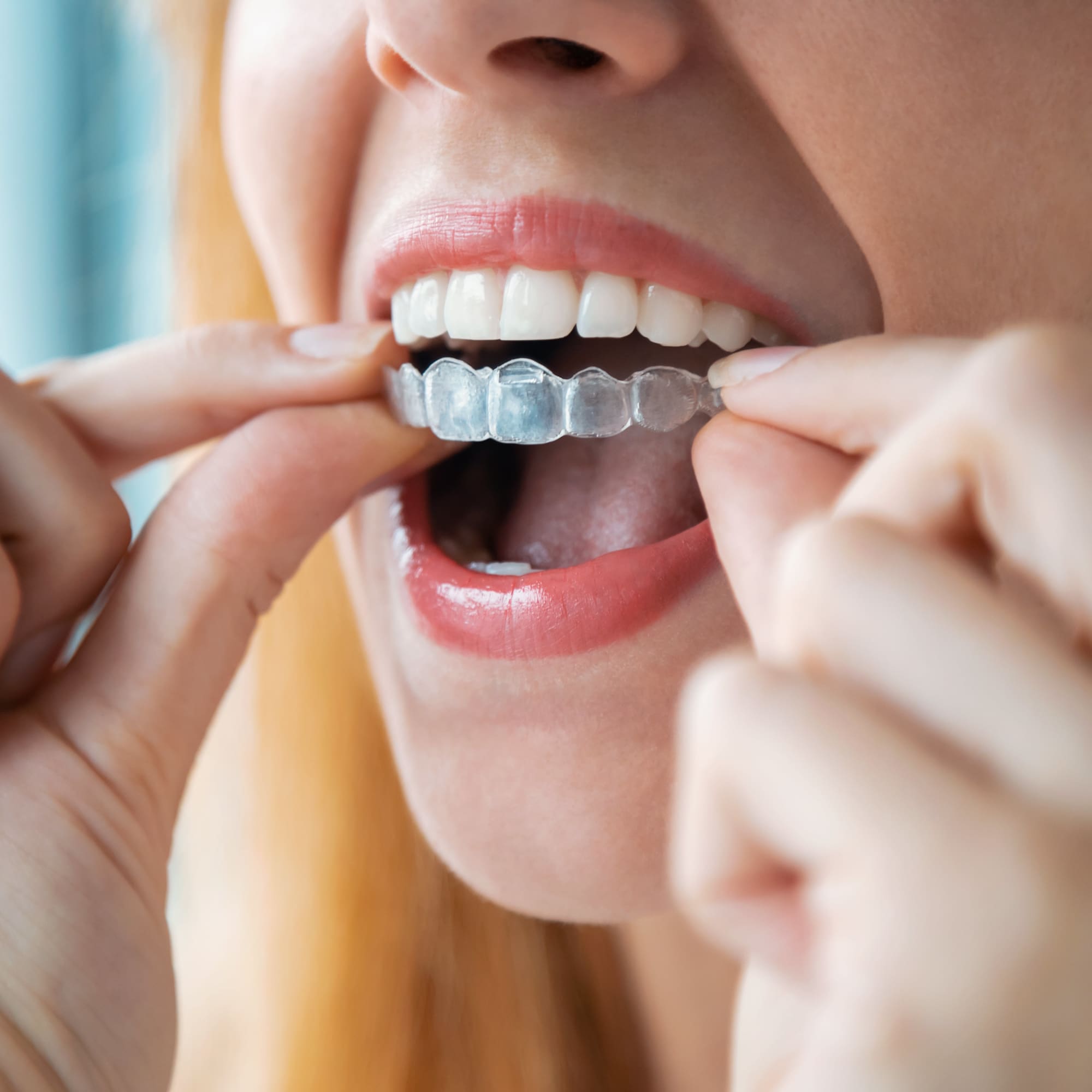
- POPSUGAR Australia
- Beauty
- The Pros and Cons of At-Home Teeth Aligners, According to a Dentist
The Pros and Cons of At-Home Teeth Aligners, According to a Dentist

One of the few perks of spending nearly a year at home with limited social interaction is that it’s proven to be the perfect time for some of us to finally take on the uncomfortable (and sometimes embarrassing) beauty deeds we’ve been putting off for so long. That includes attempting to switch to natural deodorant, growing out your eyebrows, or even seeing just how long you can go without washing your hair. As the ads on my Instagram feed would like to convince me, now has also never been a more perfect time to straighten your teeth at home via invisible aligners.
Much like traditional braces, invisible aligners can straighten teeth and fix common bite problems. A major difference, though, is that aligners can be removed from your mouth at any time and are meant to be switched out weekly. Each time you replace your aligner, the new one will move your teeth closer to your final goal. These are typically more common among adults who’ve already worn braces in the past and lost or stopped wearing their retainers, though they’re not limited to just this pool of candidates.
“Clear aligners work well for people who can tolerate wearing an appliance, especially a nighttime appliance, as after your treatment, you will need to wear retainers to prevent your teeth from shifting,” cosmetic dentist Sophya Morghem, DMD, MS, told POPSUGAR. “The clear aligners can do a lot of complex movements these days, but it is very difficult to move teeth that are severely rotated or placed significantly out of the arch.”
In the last few years, several companies have emerged offering consumers invisible braces that can straighten their smiles in a matter of months without them having to visit the orthodontist — not even to get the molds or impressions that the aligners are made from. Byte, for example, sells a special kit allowing potential customers to take their own impressions at home for just $95. According to the site, once the molds are sent back, they’re reviewed by orthodontists who examine whether or not each case is treatable – if all goes well, a treatment plan is then created for you with the goal for you to have straighter teeth in three months. Easysmile offers a similar service, though its timeline lands at around five months.
Smile Direct Club also offers at-home impression kits, though customers can opt to get a 3D image of their teeth taken in one of the company’s locations in every major city. In any case, there’s never been more of an interest in at-home beauty treatments than this past year. Limited office visits come in handy in the middle of a pandemic, though that’s not to say that you shouldn’t be careful when it comes to straightening your teeth without the help of a professional.
“Many of these [direct-to-consumer] companies treat patients that are not good candidates for clear aligners, and we have seen major bite issues, TMJ pain, and loose teeth,” Dr. Morghem said, adding that if you do purchase at-home aligners, make sure your journey is at least being supervised by a dentist or professional.
“I strongly discourage the use of the DTC companies that do not have a dental health professional providing the person’s treatment plan,” she said.


